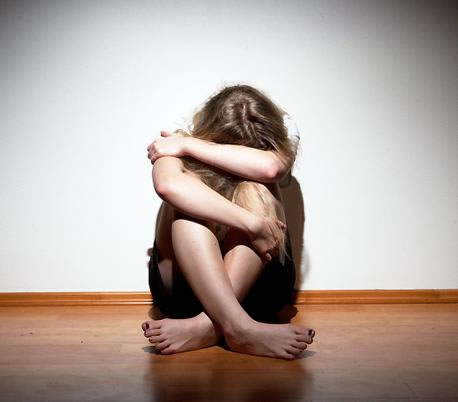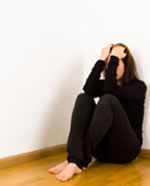Domestic Abuse
What is domestic abuse?
 Harbour uses the Home Office definition of domestic violence which is:
Harbour uses the Home Office definition of domestic violence which is:
Any incident or pattern of incidents of controlling, coercive or threatening behaviour, violence or abuse between those aged 16 or over who are or have been intimate partners or family members regardless of gender or sexuality. This can encompass but is not limited to the following types of abuse:
- psychological
- physical
- sexual
- financial
- emotional
Controlling behaviour is: a range of acts designed to make a person subordinate and/or dependent by isolating them from sources of support, exploiting their resources and capacities for personal gain, depriving them of the means needed for independence, resistance and escape and regulating their everyday behaviour.
Coercive behaviour is: an act or a pattern of acts of assault, threats, humiliation and intimidation or other abuse that is used to harm, punish, or frighten their victim.*
*This definition includes so called ‘honour’ based violence, female genital mutilation (FGM) and forced marriage, and is clear that victims are not confined to one gender or ethnic group.
Violence or Abuse?
The Home Office definition refers to violence however we prefer the phrase domestic abuse as this wider term better describes the range of experiences that victims are subjected to.
For some people there is no violence involved but there is sustained and devastating psychological abuse which debilitates them and has a profound impact on their life and the lives of those around them.
For others the violence is brutal and life changing.
Our services will respond to both of these situations and offer support to those affected.
Who experiences domestic abuse?
 Research shows that domestic abuse is most commonly experienced by women and perpetrated by men. However we acknowledge that any person can experience domestic violence regardless of gender, sexual orientation, race, ethnic or religious group, class, disability or lifestyle.
Research shows that domestic abuse is most commonly experienced by women and perpetrated by men. However we acknowledge that any person can experience domestic violence regardless of gender, sexual orientation, race, ethnic or religious group, class, disability or lifestyle.
Domestic violence can also take place in lesbian, gay, bi-sexual and transgender relationships, and can involve other family members, including children.
Fact File
More than one in four women nationally (4.8 million) aged between 16 and 59 have been affected by domestic abuse (DH, 2011).
40-50% of women who have experienced domestic abuse are raped within their physically abusive relationship (DH, 2011).
Pregnancy is associated with increased risk of abuse. One consequence can involve a miscarriage (Women‟s Aid, 2007 citing Lewis and Drife, 2001, 2005; McWilliams and McKiernan, 1993, Taft, 2002).
3.2 million women aged between 16 and 59 have been sexually assaulted since the age of 16 (DH, 2011).
The cost of abuse against women and children runs into billions of pounds. Costs include the costs of providing public services for victims, the lost economic output of women and the human and emotional costs of abuse for victims. An indicative figure for the minimum cost of abuse against women and children is £36.7bn (DH, 2011, Home Office , 2010).
50% of women in prison report domestic abuse and one third report sexual abuse (DH, 2011).
Almost one eighth (12.4%) of lesbian/bisexual women have been victims of partner abuse (non-sexual). (DH, 2011).
When we add to this trafficking, forced marriage, female genital mutilation, (so-called) honour-based violence, forced prostitution and sexual harassment at both work and in public spaces – as well as significant under-reporting – we are looking at a significant proportion of UK women having experienced some form of gender based violence or abuse (DH, 2011).
At least 950,000 children a year witness domestic abuse. (YouGov & 4 Children 2012).
Children who live with domestic abuse are at increased risk of behavioural problems and emotional trauma, and mental health difficulties in adult life. (Women‟s Aid 2007 citing, Kolbo, et al., 1996; Morley and Mullender, 1994; Hester et al., 2000).
Nearly three quarters of children on the 'at risk' register live in households where domestic abuse occurs and 52% of child protection cases involving domestic abuse (Women’s Aid)
In 75% to 90% of incidents of domestic abuse, children are in the same or the next room (Women’s Aid, 2007 citing Hughes, 1992; Abrahams, 1994).
The link between child physical abuse and domestic abuse is high, with estimates ranging between 30% to 66% depending upon the study (Women‟s Aid, 2007 citing Hester et al, 2000; Edleson, 1999; Humphreys and Thiara, 2002).
70% of children living in UK refuges have been abused by their father (Women’s Aid, 2007 citing Bowker et al., 1998).
Why does it happen?
All forms of domestic abuse - psychological, economic, emotional and physical - come from the abuser's desire for power and control over other family members or intimate partners.
What are the signs of domestic abuse?
 Destructive criticism and verbal abuse: shouting/mocking/accusing/name calling/verbally threatening
Destructive criticism and verbal abuse: shouting/mocking/accusing/name calling/verbally threatening
Pressure tactics: sulking, threatening to withhold money, disconnect the telephone, take the car away, commit suicide, take the children away, report you to welfare agencies unless you comply with his/her demands regarding bringing up the children, lying to your friends and family about you, telling you that you have no choice in any decisions.
Disrespect: persistently putting you down in front of other people, not listening or responding when you talk, interrupting your telephone calls, taking money from your purse without asking, refusing to help with childcare or housework.
Breaking trust: lying to you, withholding information from you, being jealous, having other relationships, breaking promises and shared agreements.
Isolation: monitoring or blocking your telephone calls, telling you where you can and cannot go, preventing you from seeing friends and relatives.
Harassment: following you, checking up on you, opening your mail, repeatedly checking to see who has telephoned you, embarrassing you in public.
Threats: making angry gestures, using physical size to intimidate, shouting you down, destroying your possessions, breaking things, punching walls, wielding a knife or a gun, threatening to kill or harm you and the children.
Sexual violence: using force, threats or intimidation to make you perform sexual acts, having sex with you when you don't want to have sex, any degrading treatment based on your sexual orientation.
Physical violence: punching, slapping, hitting, biting, pinching, kicking, pulling hair out, pushing, shoving, burning, strangling.
Denial: saying the abuse doesn't happen, saying you caused the abusive behaviour, being publicly gentle and patient, crying and begging for forgiveness, saying it will never happen again.
Is it a crime?
Domestic abuse may comprise a number of different behaviours and consequences, so there is no single criminal offence of “domestic violence or domestic abuse”. However, many forms of domestic abuse are crimes – for example, harassment, assault, criminal damage, attempted murder, rape and false imprisonment. Being assaulted, sexually abused, threatened or harassed by a partner or family member is just as much a crime as violence from a stranger, and often more dangerous.
